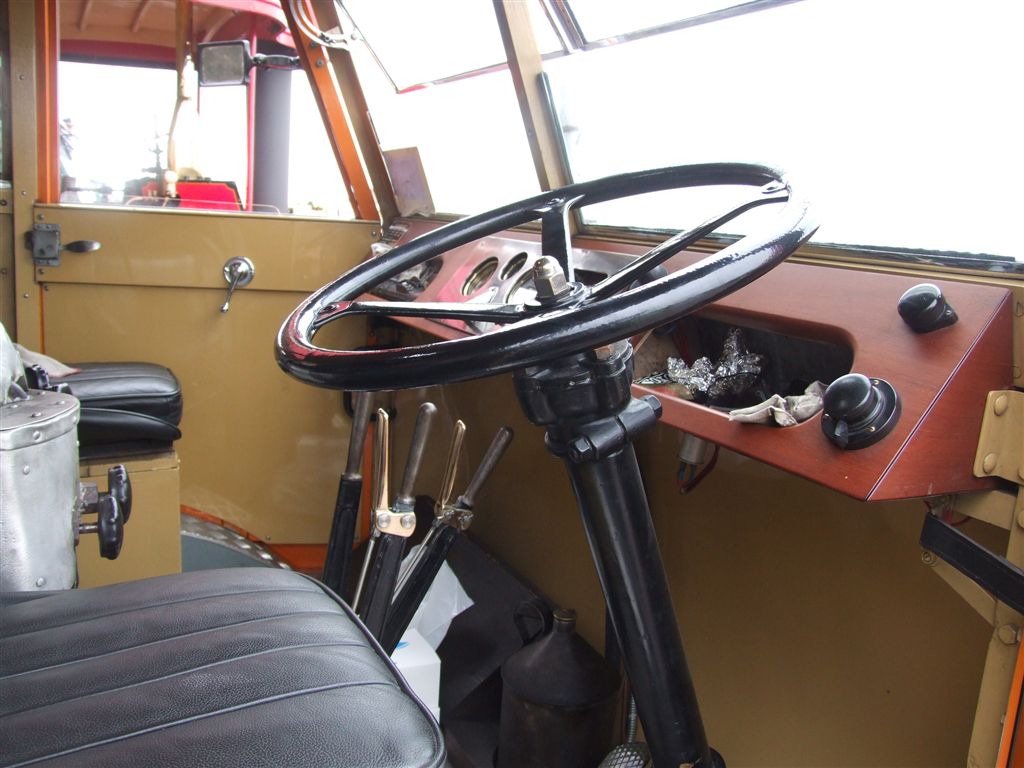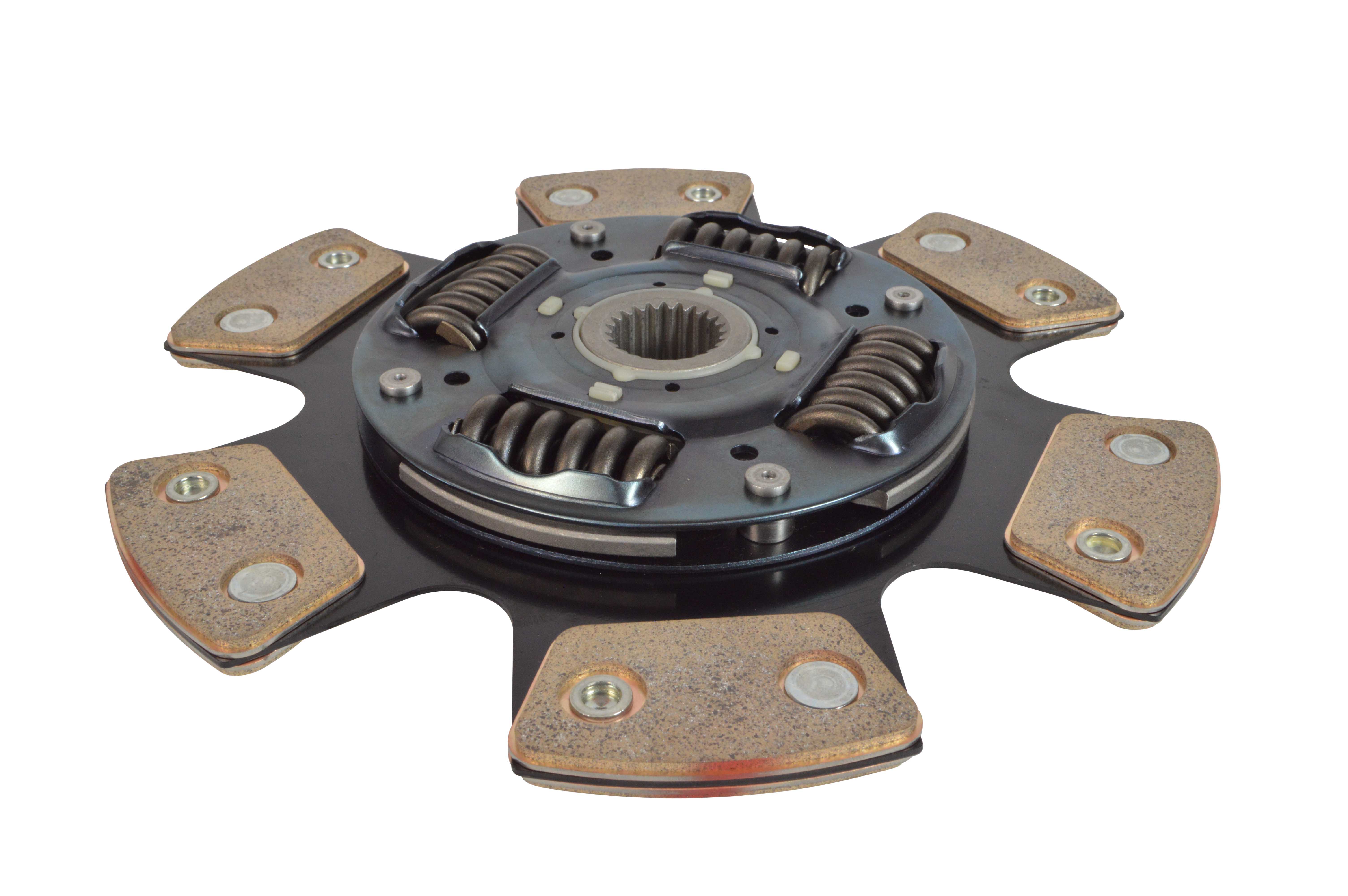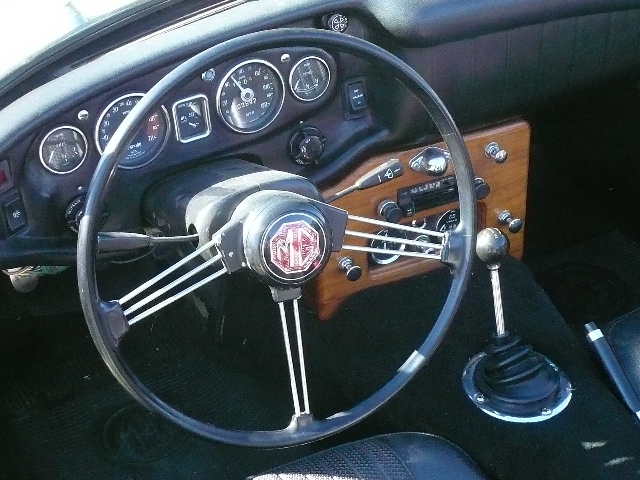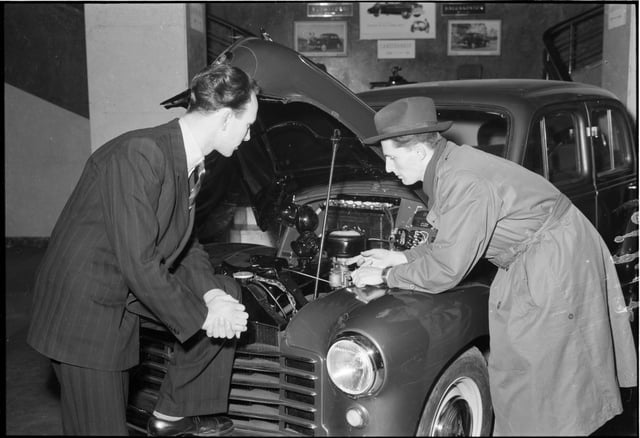
For anyone who drives a manual transmission vehicle, the clutch assembly is undeniably a crucial component, serving as the vital link that transfers power from the engine to the wheels. It enables you to shift gears smoothly and control power delivery, ensuring an optimal driving experience. Given its central role in vehicle performance, understanding how the clutch works and, more importantly, recognizing the warning signs of its wear and tear is paramount for preventing costly repairs and dangerous breakdowns.
Like any mechanical part, a car’s clutch experiences significant wear over time due to the constant friction from engaging and disengaging. Driving habits, such as riding the clutch, frequent stop-start traffic, aggressive gear changes, or even towing heavy loads, can significantly shorten its lifespan. While most clutches are designed to last between 50,000 to 100,000 miles, knowing the tell-tale signs that your clutch is ‘going off’ is your first line of defense against unexpected issues.
Ignoring these critical indicators can lead to more severe damage, potentially affecting your transmission and leading to far more expensive repairs than a timely clutch replacement. This comprehensive guide will break down the most common symptoms of a failing clutch, offering clear explanations of what they mean and why they shouldn’t be overlooked. By equipping yourself with this practical knowledge, you can take proactive steps to maintain your vehicle’s health and ensure a smoother, safer journey on the road.

1. **Slipping Clutch**One of the most unequivocal signs that your clutch is nearing the end of its life is a phenomenon known as a “slipping clutch.” This condition manifests when the engine revs noticeably increase, yet the vehicle does not accelerate proportionally. It’s particularly evident when you’re attempting to accelerate rapidly, driving uphill, or operating under heavy loads, where the clutch is subjected to greater strain. The feeling is akin to a momentary loss of connection between the engine’s power and the wheels’ movement, as if the power isn’t fully transferring.
This occurs primarily because the friction material on the clutch plate has become worn out, preventing it from fully engaging with the flywheel. Without proper engagement, the clutch cannot efficiently transmit the engine’s power to the transmission, leading to a noticeable drop in performance and increased fuel consumption. The worn friction material means there isn’t enough grip to effectively lock the engine to the transmission input shaft, causing them to spin at different rates when they should be synchronized.
Oil contamination on the clutch surfaces or a weak or damaged pressure plate can also contribute to a slipping clutch. This issue not only reduces your vehicle’s overall performance but can quickly escalate to complete clutch failure if left unaddressed. If you experience sudden increases in RPMs without a corresponding boost in speed, especially under load, it’s a strong indication that your clutch plate is past its prime and needs immediate attention.
Read more about: Mastering the Trail: An Expert’s Guide to 13 Critical 4×4 and Drivetrain Failures Every Truck Owner Must Know

2. **Difficulty in Shifting Gears**Experiencing resistance or outright difficulty when attempting to shift gears is another prominent red flag signaling potential clutch problems. You might find it hard to move the gear lever smoothly, or encounter a noticeable grind or clunking sound when engaging gears, particularly when trying to shift into first or reverse from neutral. This issue suggests that the clutch is not fully disengaging when you press the pedal, making a clean gear change problematic.
When the clutch doesn’t fully disengage, it means the connection between the engine and the gearbox isn’t completely severed. This partial engagement causes friction and resistance within the gearbox as you try to force a gear change, leading to grinding noises or a stiff gear lever. The inability to cleanly separate the engine from the transmission input shaft can put undue stress on the gearbox components, accelerating their wear and potentially leading to more extensive and costly repairs.
Possible underlying causes for this difficulty include a worn clutch itself, issues with the clutch master or slave cylinder, or even air or leaks within the hydraulic system that operates the clutch. A warped flywheel or pressure plate can also hinder proper disengagement. Ignoring persistent difficulty in shifting gears is unwise, as forcing gears can inflict significant damage on your transmission, turning a clutch issue into a much larger and more expensive gearbox rebuild.
Read more about: Mastering the Trail: An Expert’s Guide to 13 Critical 4×4 and Drivetrain Failures Every Truck Owner Must Know
3. **Burning Smell**Few automotive issues announce their presence quite as distinctly as a strong, acrid burning smell, especially one that emanates from the clutch area. If you detect a sulfurous stench, particularly when shifting gears, driving in heavy traffic, or performing hill starts, it’s a clear and unmistakable sign of excessive clutch wear and overheating. This pungent odor is essentially the smell of the clutch’s friction material literally burning away due to intense heat.
The burning smell arises from the friction created when the clutch disc and the flywheel rub against each other without sufficient engagement or when the clutch is being ‘ridden’ excessively. This generates immense heat, causing the friction material to overheat and degrade rapidly. Common scenarios that produce this smell include holding the clutch pedal down too long (riding the clutch), a slipping clutch working harder than it should under heavy load, or simply a clutch plate and pressure plate that are worn to their limits.
Persistent burning smells are not just an unpleasant sensory experience; they are a major warning that your clutch is critically overheating and losing its functional material. Continuing to drive with a clutch that emits a burning odor will inevitably lead to its complete failure, leaving you stranded. It’s crucial to have your vehicle inspected promptly if you encounter this smell, as it signals an urgent need for clutch replacement before more severe damage occurs.
Read more about: The Definitive Guide: 12 Top-Rated Car Wash Soaps Under $15 for a Professional Shine

4. **Unusual Noises**A healthy clutch system operates with relative quiet, so any new or unusual noises emanating from the clutch pedal or transmission area should immediately grab your attention. If you hear grinding, squeaking, rattling, or even chirping sounds when you press down on the clutch pedal, or when shifting gears, these are often auditory cues that internal components are wearing down or have become damaged. These noises typically worsen over time, indicating a progressive problem.
Grinding noises when changing gear or when the clutch is engaged often point towards a damaged clutch disc or problems with the alignment between the flywheel and pressure plate. A squealing or chirping sound when engaging the clutch, or rattling when the clutch is disengaged, can specifically indicate a worn-out clutch release bearing or pilot bearing. These bearings are critical for smooth operation, and when they fail, they generate characteristic sounds due to excessive friction or loose components.
Such noises are not merely an annoyance; they are often an early and undeniable sign that your clutch is ‘going off’ and internal mechanisms are degrading. While in some cases, a mechanic might be able to replace only the noisy parts, severe or ignored damage may necessitate replacing the entire clutch assembly. Therefore, any grinding, squeaking, or rattling from your clutch system should never be ignored and warrants immediate professional assessment to prevent further component failure.
Read more about: 13 Simple Steps to Rebuild Your Truck’s Suspension Bushings for a Smoother Ride

5. **Clutch Pedal Feels Soft or Spongy**When you engage the clutch, the pedal should offer a consistent, firm, and responsive feel. If you notice that your clutch pedal has become unusually soft, spongy, or requires excessive pressing to engage gears, it’s a significant indicator of a problem within the clutch’s hydraulic system or its mechanical components. This change in pedal feel can make driving feel imprecise and less controlled, impacting your ability to shift gears effectively.
The primary culprits for a soft or spongy clutch pedal often lie in the hydraulic system, which transmits the force from your foot to the clutch mechanism. Possible causes include air trapped in the hydraulic lines, worn seals in the clutch master or slave cylinder, or critically low hydraulic fluid levels due to a leak. Air in the lines compresses, creating the spongy sensation, while fluid loss reduces the pressure needed for firm pedal response.
Additionally, a worn clutch disc itself can sometimes contribute to a feeling of lessened resistance in the pedal. A spongy pedal can quickly escalate to total clutch failure if the underlying hydraulic issue or component wear is not addressed. Because the hydraulic system is crucial for the clutch’s operation, any deviation from its normal firm feel means it’s best to have your clutch system inspected by a professional mechanic without delay. Early diagnosis of a soft or spongy pedal can prevent the problem from worsening into a complete inability to engage the clutch.
Read more about: Mastering the Trail: An Expert’s Guide to 13 Critical 4×4 and Drivetrain Failures Every Truck Owner Must Know

6. **Clutch Pedal Sticking or Staying Down**Beyond just a soft or spongy feel, another critical sign that your clutch system is in distress is a pedal that either sticks to the floor after being pressed or is noticeably slow to return to its original, upright position. This sensation can range from a minor annoyance to a complete inability to engage the clutch properly, severely impacting your control over the vehicle and making gear changes unpredictable, if not impossible. When a clutch pedal consistently fails to rebound as it should, it’s a clear signal that there’s a significant mechanical or hydraulic impediment within the system preventing the pedal from functioning as designed.
The primary culprits for a sticky clutch pedal often lie within the hydraulic system that transmits the force from your foot to the clutch mechanism. Problems such as a failing clutch master cylinder, slave cylinder, or issues within the hydraulic lines themselves can cause this. For instance, worn internal seals within these cylinders can lead to internal fluid bypass, which diminishes the pressure required to effectively return the pedal to its resting position. A blockage within the hydraulic lines, perhaps due to contaminated fluid, can also hinder smooth fluid movement, contributing to the sticking sensation.
Furthermore, mechanical components can also play a role. A worn or damaged clutch fork, which pushes the release bearing, might be binding, or the release bearing itself could be seized or heavily worn, creating resistance against the pedal’s return. In some cases, even a compromised or broken return spring on the clutch pedal assembly can be the cause, although this is usually a simpler fix than hydraulic system failures. Regardless of the exact cause, a sticky pedal signifies that the entire system is struggling to complete its full operational cycle.
Ignoring a clutch pedal that sticks can have serious ramifications. If the pedal remains partially depressed, even slightly, it can cause the clutch to drag, meaning it’s not fully disengaged even when you’ve taken your foot off. This dragging leads to excessive friction and heat buildup, which drastically accelerates wear on the clutch plate and flywheel, quickly leading to complete failure. In more severe cases, a completely stuck pedal can render you unable to shift gears or even start the vehicle, potentially leaving you stranded in an unsafe situation. Therefore, any consistent issue with your clutch pedal’s return action should prompt an immediate inspection by a qualified mechanic to diagnose and rectify the underlying problem before it leads to further, more extensive damage.
Read more about: 14 Car Myths Mechanics Are Begging You To Stop Believing (Save Money & Keep Your Ride Healthy!)

7. **Vibrations or Jerky Movements**A smooth, controlled engagement of the clutch is fundamental to a comfortable and safe driving experience. If you begin to notice distinct vibrations, shuddering, or jerky movements emanating from the vehicle, especially as you press and release the clutch pedal or when moving off from a standstill, it’s a clear indication that something is seriously amiss within the clutch assembly. This isn’t just an unpleasant sensation that makes driving uncomfortable; it signifies an imbalance or irregularity in the way the clutch components are interacting, often suggesting uneven wear or significant damage that requires prompt attention.
These unsettling vibrations, often described as “juddering” when pulling away, typically stem from an unevenly worn clutch plate or a warped flywheel. When these crucial surfaces are no longer perfectly flat or parallel, they cannot engage smoothly, causing a noticeable stuttering effect as they try to grab each other during engagement. This inconsistent contact creates friction surges rather than a continuous, smooth transfer of power. Over time, this uneven wear is almost inevitable, but pronounced shuddering indicates an advanced stage of deterioration.
Contamination from oil, grease, or other foreign substances on the clutch surfaces can also drastically reduce the friction coefficient in certain areas, leading to highly inconsistent engagement and pronounced shuddering. Imagine trying to get a good grip on a greasy surface – the clutch experiences a similar struggle. Furthermore, problems with the pressure plate, which is responsible for applying uniform clamping force to the clutch disc, can also contribute to these unwanted movements if it’s warped or has weak springs. Even worn engine or transmission mounts can exacerbate vibrations, as the entire drivetrain might be shifting excessively under the uneven load of a faulty clutch.
The implications of persistent vibrations or jerky movements are significant, extending beyond mere discomfort to directly threaten the longevity of your entire drivetrain. The repeated shock loads and uneven stress generated by a shuddering clutch can accelerate wear on not only the clutch components themselves but also the transmission, driveshaft, and even critical engine mounts. This can lead to a cascade of more complex and expensive repairs down the line, turning a relatively contained clutch issue into a much larger vehicle breakdown. Addressing these vibrations quickly is therefore essential to prevent further component failure and restore predictable, safe vehicle operation.
Read more about: Avoid the ‘Widow Maker’: The Most Dangerous Bikes Ever Made & Essential Safety Tips for New Motorcycle Riders
8. **Reduced Acceleration Power**While a slipping clutch (Item 1) often manifests as dramatically increased engine revs without a corresponding speed increase, another related but distinct symptom of clutch wear is a general feeling of significantly reduced acceleration power. This means that even when the engine seems to be working hard, and RPMs are climbing, the vehicle simply doesn’t respond with the expected forward thrust. It feels sluggish, underpowered, and noticeably struggles to gain speed, particularly when attempting to accelerate rapidly, merge onto busy highways, or climb challenging inclines. Your car feels heavy and unresponsive, as if it’s constantly fighting an unseen resistance.
This diminished acceleration is a direct result of the clutch’s inability to efficiently transfer the engine’s power to the wheels. Even if the clutch isn’t outright “slipping” in the classic, highly noticeable sense, a worn clutch plate or a weakened pressure plate might not be able to apply sufficient clamping force to create a robust and consistent connection between the engine and the transmission. This “partial engagement” or inherent inefficiency means that a significant portion of the engine’s power is effectively lost within the clutch assembly itself, dissipating as waste heat rather than being effectively utilized to propel the vehicle forward. The engine is generating power, but that power isn’t making it to the ground.
The friction material on the clutch disc, designed to provide a strong grip, becomes thinner and less effective with wear. As this material degrades, the clutch simply cannot maintain the tight lock necessary for optimal power transfer, especially under load. This leads to what feels like a constant lag between your foot on the accelerator and the vehicle’s actual response. You might find yourself pressing the pedal further and further down to achieve speeds that were previously effortless, and the car’s overall performance feels drastically compromised.
The consequences of reduced acceleration power extend beyond mere inconvenience. A vehicle that struggles to accelerate safely can quickly become a significant hazard in traffic, making maneuvers like overtaking, merging onto fast-moving lanes, or navigating intersections incredibly dangerous. Furthermore, the engine will inevitably be working much harder than necessary to achieve even moderate speeds, leading to increased fuel consumption, elevated emissions, and accelerated wear on other critical engine components. If your car feels like it’s perpetually running out of breath despite your foot being firmly on the accelerator, it’s a strong indication that your clutch assembly is no longer performing its fundamental task of power transfer efficiently and requires immediate professional attention.
Read more about: Beyond the Checkered Flag: 12 Essential Safety Upgrades Every Track Day Driver Needs

9. **Clutch Pedal Biting Point Changes**One of the more subtle yet profoundly significant indicators of clutch wear can be found in the “biting point” of the clutch pedal – the specific point in the pedal’s travel where the clutch begins to engage, and power starts to smoothly transfer from the engine to the wheels. A healthy clutch will have a consistent and predictable biting point that you, as the driver, become intimately accustomed to. However, if you notice this engagement point shifting significantly higher or lower than its usual position, it often signals that the clutch plate is wearing down, or that there are issues within the hydraulic or cable system that warrants careful investigation.
A “high biting point,” where the clutch only begins to engage when the pedal is almost fully released, closer to the top of its travel, is a classic and very common sign of a worn clutch plate. As the friction material on the clutch disc gradually wears away with thousands of engagements, the physical thickness of the disc decreases. To compensate for this thinning, the pressure plate and release bearing have to travel a greater distance to make full, positive contact with the flywheel. This effectively moves the point of engagement higher in the pedal’s arc, requiring you to release the pedal further before the car starts to move.
Conversely, a “low biting point,” where the clutch engages very early, closer to the floor of the vehicle, could signal a different set of problems. This might indicate issues within the hydraulic system, such as air trapped in the hydraulic lines, which makes the system less efficient at moving fluid, or a problem with an improperly adjusted clutch cable (in cable-operated systems). In such cases, the clutch might not be fully disengaging until the pedal is nearly at the bottom of its travel, making it harder to shift gears smoothly and potentially causing a dragging clutch condition.
Any alteration to the clutch’s biting point fundamentally changes the vehicle’s driving characteristics and can make smooth, precise gear changes far more challenging. A high biting point, in particular, strongly suggests that the clutch disc’s friction material is nearing the end of its functional life, as there is little material left to effectively create a strong grip. This condition can quickly lead to a slipping clutch and, eventually, complete failure, leaving you without propulsion. Monitoring your clutch’s biting point is an excellent, early-warning diagnostic tool, and a noticeable or abrupt change should prompt an inspection to determine whether a simple adjustment or a full clutch replacement is necessary to restore proper function and prevent further, more costly wear.
Read more about: Decoding Hybrid Durability: The Top 5 Hybrids Built to Last and 5 Others That Could Cost You a Fortune in Repairs

10. **Noisy Acceleration**While “unusual noises” (Item 4) primarily refer to specific sounds heard when pressing the clutch pedal, releasing it, or actively shifting gears, “noisy acceleration” describes a distinct and troubling set of sounds that emerge when you are actively speeding up, even if the initial gear shift itself felt smooth and unproblematic. This symptom suggests that internal components are struggling under the increased load of acceleration, or that the power transfer mechanism is no longer operating with the expected mechanical harmony and quiet efficiency. The car suddenly becomes “vocal” during acceleration, producing sounds that weren’t present before.
These noises during acceleration can manifest in several ways: a persistent hum that grows louder with speed, a growing groan that feels linked to the engine’s effort, or even a metallic clang or rumble that becomes more pronounced as engine RPMs increase and the vehicle gains speed. Such sounds often point to a clutch assembly that is struggling to maintain a firm, consistent lock between the engine and transmission under the stress of delivering power. It could indicate excessive play in components, misalignment between the flywheel and pressure plate, or even worn-out bearings within the transmission or drive train that are being stressed by an inefficient or imbalanced clutch system. Unlike the distinct squeals of a release bearing, noisy acceleration points to a broader system-under-stress scenario, where components are protesting the demands placed upon them.
The origin of these sounds might also be attributed to an imbalanced flywheel or pressure plate that, while not necessarily causing a full judder on engagement, vibrates excessively at higher rotational speeds during acceleration. Additionally, worn pilot bearings or input shaft bearings in the transmission, which are typically quiet during idle, might begin to groan or whine under the torque and rotational forces of acceleration when the clutch is engaged. These components, when compromised, cannot handle the increased demands of acceleration without generating noticeable and concerning auditory feedback.
Ignoring noisy acceleration is akin to ignoring the early rumblings of a larger, impending mechanical failure. The continuous stress and friction implied by these sounds can lead to rapid degradation of not just the clutch components but also the transmission, driveshaft, and other interconnected drivetrain elements. A vehicle that is audibly protesting during acceleration is signaling a significant mechanical inefficiency or damage that, if left unaddressed, will inevitably lead to a more severe and costly breakdown. A professional diagnostic is absolutely critical to pinpoint the precise source of these noises and address them effectively, preventing them from escalating beyond a potentially straightforward clutch replacement to a much more complex and expensive repair.
**Preventative Measures and Professional Advice**
Understanding these comprehensive signs is the first crucial step in maintaining your manual transmission vehicle, but adopting proactive measures can significantly extend your clutch’s lifespan, saving you time and money. One of the most important preventative tips is to rigorously avoid “riding the clutch”—that habit of resting your foot on the clutch pedal when not actively shifting gears. Even slight pressure causes unnecessary friction and heat, accelerating wear on the clutch plate and pressure plate. Instead, fully release the pedal when not needed, placing your foot on the dead pedal or floor.
Moreover, judicious driving techniques play a massive role. When stopped on an incline, use your handbrake to hold the vehicle in place instead of relying on the clutch to prevent rolling back, which is a common cause of premature wear. Engage the clutch smoothly and deliberately, avoiding abrupt, “dumping” actions or excessive engine revving during engagement, as shock loads put immense stress on the entire assembly. Furthermore, respect your vehicle’s towing capacity and avoid hauling loads heavier than recommended, as this places extraordinary strain on the clutch system, significantly shortening its functional life.
Despite your best efforts and adherence to careful driving habits, all clutches eventually wear out due to the inherent friction involved in their operation. While most clutches are designed to last between 50,000 to 100,000 miles, this lifespan can vary widely based on individual driving styles, traffic conditions, and vehicle specifications. When you do begin to notice one or more of these twelve critical warning signs, it is absolutely crucial to seek professional help from a qualified mechanic without any delay.
Read more about: 11 Critical Car Buyer Regrets That Make Owners Wish for an Instant Trade-In
Continuing to drive with a failing clutch not only jeopardizes your safety on the road due to unpredictable vehicle behavior but can also inflict catastrophic damage upon your transmission and other interconnected drivetrain components. What could have been a relatively straightforward and contained clutch replacement can quickly escalate into a far more complex and prohibitively expensive gearbox rebuild if the initial warnings are ignored. A professional inspection will typically involve removing the transmission to access the clutch assembly, allowing for the replacement of the clutch disc, pressure plate, and release bearing. Often, the flywheel will also be inspected and resurfaced or replaced if necessary. This comprehensive approach restores your vehicle to its optimal, smooth-shifting performance and ensures its long-term reliability. Don’t wait for your clutch to completely fail and leave you stranded; acting early upon these crucial indicators is the key to safeguarding your vehicle’s health and your wallet.



